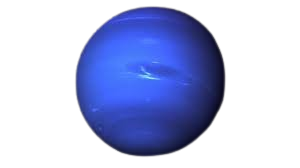MERCURY
Mercury is the first planet from the Sun and the smallest in the Solar System. In English, it is named after the ancient Roman god Mercurius (Mercury), god of commerce and communication, and the messenger of the gods. Mercury is classified as a terrestrial planet, with roughly the same surface gravity as Mars. The surface of Mercury is heavily cratered, as a result of countless impact events that have accumulated over billions of years. Its largest crater, Caloris Planitia, has a diameter of 1,550 km (960 mi) and one-third the diameter of the planet (4,880 km or 3,030 mi). Similarly to the Earth's Moon, Mercury's surface displays an expansive rupes system generated from thrust faults and bright ray systems formed by impact event remnants.
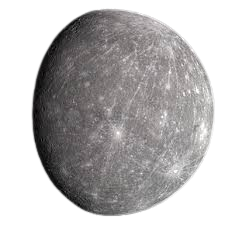
VENUS
Venus is the second planet from the Sun. It is a terrestrial planet and is the closest in mass and size to its orbital neighbour Earth. Venus is notable for having the densest atmosphere of the terrestrial planets, composed mostly of carbon dioxide with a thick, global sulfuric acid cloud cover. At the surface it has a mean temperature of 737 K (464 °C; 867 °F) and a pressure of 92 times that of Earth's at sea level. These extreme conditions compress carbon dioxide into a supercritical state close to Venus's surface.
Internally, Venus has a core, mantle, and crust. Venus lacks an internal dynamo, and its weakly induced magnetosphere is caused by atmospheric interactions with the solar wind. Internal heat escapes through active volcanism, resulting in resurfacing instead of plate tectonics. Venus is one of two planets in the Solar System, the other being Mercury, that have no moons. Conditions perhaps favourable for life on Venus have been identified at its cloud layers
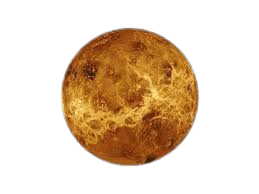
EARTH
Earth is the third planet from the Sun and the only astronomical object known to harbor life. This is enabled by Earth being an ocean world, the only one in the Solar System sustaining liquid surface water. Almost all of Earth's water is contained in its global ocean, covering 70.8% of Earth's crust. The remaining 29.2% of Earth's crust is land, most of which is located in the form of continental landmasses within Earth's land hemisphere. Most of Earth's land is somewhat humid and covered by vegetation, while large sheets of ice at Earth's polar deserts retain more water than Earth's groundwater, lakes, rivers and atmospheric water combined. Earth's crust consists of slowly moving tectonic plates, which interact to produce mountain ranges, volcanoes, and earthquakes. Earth has a liquid outer core that generates a magnetosphere capable of deflecting most of the destructive solar winds and cosmic radiation.
Earth has a dynamic atmosphere, which sustains Earth's surface conditions and protects it from most meteoroids and UV-light at entry. It has a composition of primarily nitrogen and oxygen. Water vapor is widely present in the atmosphere, forming clouds that cover most of the planet. The water vapor acts as a greenhouse gas and, together with other greenhouse gases in the atmosphere, particularly carbon dioxide (CO2), creates the conditions for both liquid surface water and water vapor to persist via the capturing of energy from the Sun's light. This process maintains the current average surface temperature of 14.76 °C (58.57 °F), at which water is liquid under normal atmospheric pressure. Differences in the amount of captured energy between geographic regions (as with the equatorial region receiving more sunlight than the polar regions) drive atmospheric and ocean currents, producing a global climate system with different climate regions, and a range of weather phenomena such as precipitation, allowing components such as nitrogen to cycle.
Earth is rounded into an ellipsoid with a circumference of about 40,000 km

Mars
Mars is the fourth planet from the Sun. The surface of Mars is orange-red because it is covered in iron(III) oxide dust, giving it the nickname "the Red Planet".Mars is among the brightest objects in Earth's sky, and its high-contrast albedo features have made it a common subject for telescope viewing. It is classified as a terrestrial planet and is the second smallest of the Solar System's planets with a diameter of 6,779 km (4,212 mi). In terms of orbital motion, a Martian solar day (sol) is equal to 24.5 hours, and a Martian solar year is equal to 1.88 Earth years (687 Earth days). Mars has two natural satellites that are small and irregular in shape: Phobos and Deimos.
The relatively flat plains in northern parts of Mars strongly contrast with the cratered terrain in southern highlands – this terrain observation is known as the Martian dichotomy. Mars hosts many enormous extinct volcanoes (the tallest is Olympus Mons, 21.9 km or 13.6 mi tall) and one of the largest canyons in the Solar System (Valles Marineris, 4,000 km or 2,500 mi long). Geologically, the planet is fairly active with marsquakes trembling underneath the ground, dust devils sweeping across the landscape, and cirrus clouds. Carbon dioxide is substantially present in Mars's polar ice caps and thin atmosphere. During a year, there are large surface temperature swings on the surface between −78.5 °C (−109.3 °F) to 5.7 °C (42.3 °F)[c] similar to Earth's seasons, as both planets have significant axial tilt.
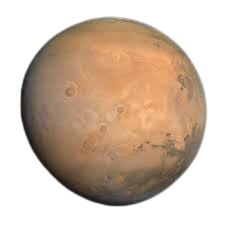
Jupiter
Jupiter is the fifth planet from the Sun and the largest in the Solar System. A gas giant, Jupiter's mass is more than two and a half times that of all the other planets in the Solar System combined and slightly less than one one-thousandth the mass of the Sun. Jupiter orbits the Sun at a distance of 5.20 AU (778.5 Gm) with an orbital period of 11.86 years. It is the third brightest natural object in the Earth's night sky after the Moon and Venus and has been observed since prehistoric times. Its name derives from Jupiter, the chief deity of ancient Roman religion.
Jupiter was the first planet to form, and its inward migration during the primordial Solar System impacted much of the formation history of the other planets. Hydrogen constitutes 90% of Jupiter's volume, followed by helium, which forms 25% of its mass and 10% of its volume. The ongoing contraction of Jupiter's interior generates more heat than the planet receives from the Sun. Its internal structure is believed to consist of an outer mantle of fluid metallic hydrogen and a diffuse inner core of denser material. Because of its rapid rotation rate of one rotation per ten hours, Jupiter's shape is an oblate spheroid; it possesses a slight but noticeable bulge around the equator. The outer atmosphere is divided into a series of latitudinal bands, with turbulence and storms along their interacting boundaries. The most obvious result of this is the Great Red Spot, a giant storm that has been recorded since at least 1831.
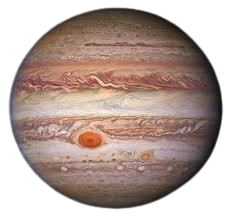
Saturn
Saturn, the sixth planet from the Sun, is a gas giant renowned for its breathtaking ring system.
Composed predominantly of hydrogen and helium, it is the second-largest planet in our solar system, trailing only Jupiter in size. Its rapid rotation has flattened its spherical shape into an oblate spheroid, characterized by a pronounced equatorial bulge. Saturn's extensive system of over 80 moons, including the enigmatic Titan with its dense atmosphere and hydrocarbon lakes, adds to its celestial allure. The planet's rings, a mesmerizing spectacle composed primarily of ice particles and rock, exhibit intricate structures and variations in density. Scientists believe the rings are relatively young, possibly formed from the remnants of a shattered moon. Saturn's powerful magnetic field, generated by the planet's rapidly rotating fluid metallic hydrogen interior, creates stunning auroras near its poles. Continuous exploration of this magnificent world through space missions has yielded invaluable data, expanding our understanding of planetary formation, atmospheric dynamics, and the complexities of satellite systems.
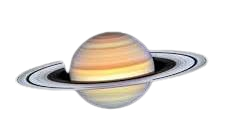
Uranus, the seventh planet from the Sun, is an ice giant renowned for its extreme axial tilt, causing it to rotate nearly on its side. This unique orientation results in pronounced seasonal variations. Primarily composed of icy materials such as water, methane, and ammonia, it possesses a thick atmosphere dominated by hydrogen and helium. Uranus is encircled by a faint ring system and has 27 known moons, including Miranda, Ariel, Umbriel, Titania, and Oberon. Its pale blue-green hue is attributed to the absorption of red light by methane in its atmosphere. The planet's internal structure is believed to consist of a rocky core surrounded by an icy mantle and an outer gaseous envelope. Despite its distant and frigid environment, Uranus harbors intriguing atmospheric phenomena, including strong winds and cloud formations. As one of the least explored planets in our solar system, Uranus continues to captivate scientists and astronomers alike, offering valuable insights into the formation and evolution of giant planets.

Neptune, the eighth and farthest planet from the Sun, captivates with its deep blue color, attributed to methane absorbing red light. As a gas giant, it has a turbulent atmosphere with the strongest winds in the solar system, reaching speeds of up to 1,200 miles per hour. Neptune's weather includes massive storms and a Great Dark Spot, similar to Jupiter's Great Red Spot. It possesses 14 known moons, including Triton, which orbits in the opposite direction of the planet's rotation. Neptune also has a faint ring system, comprised of dark, narrow rings, making it a captivating and enigmatic world at the outer reaches of our solar system.
